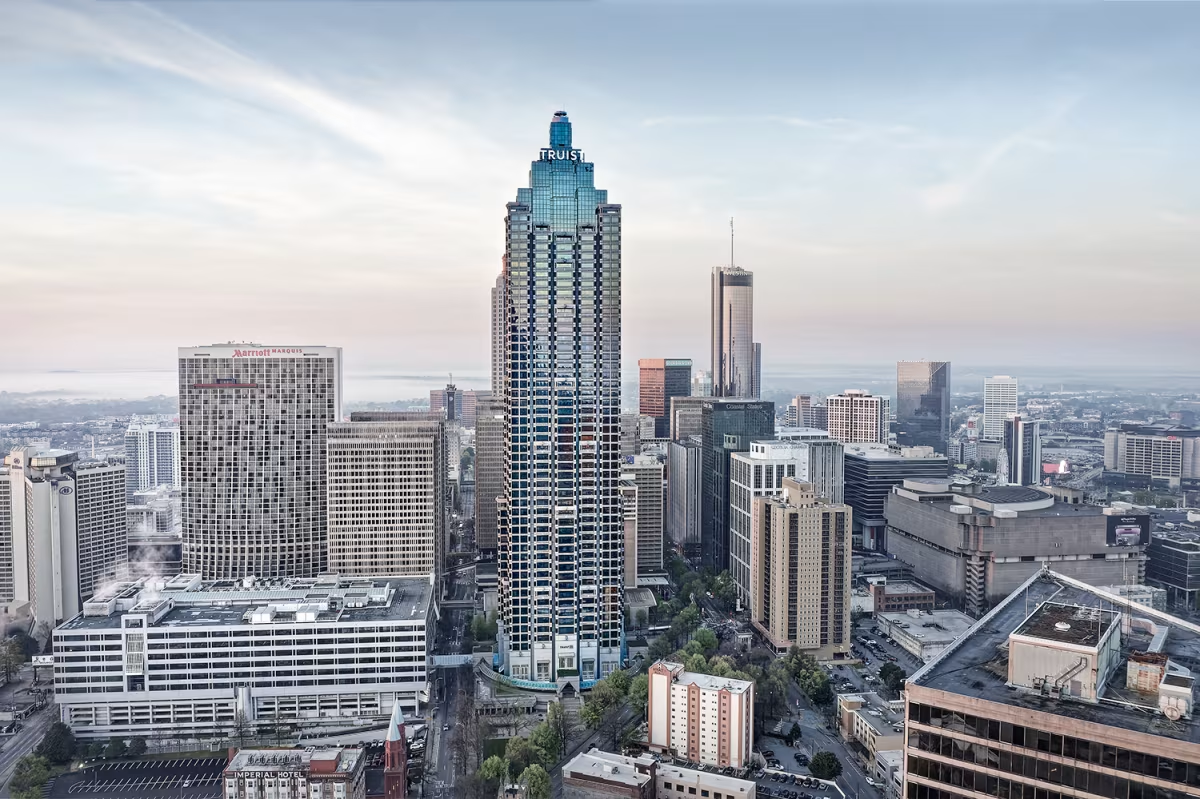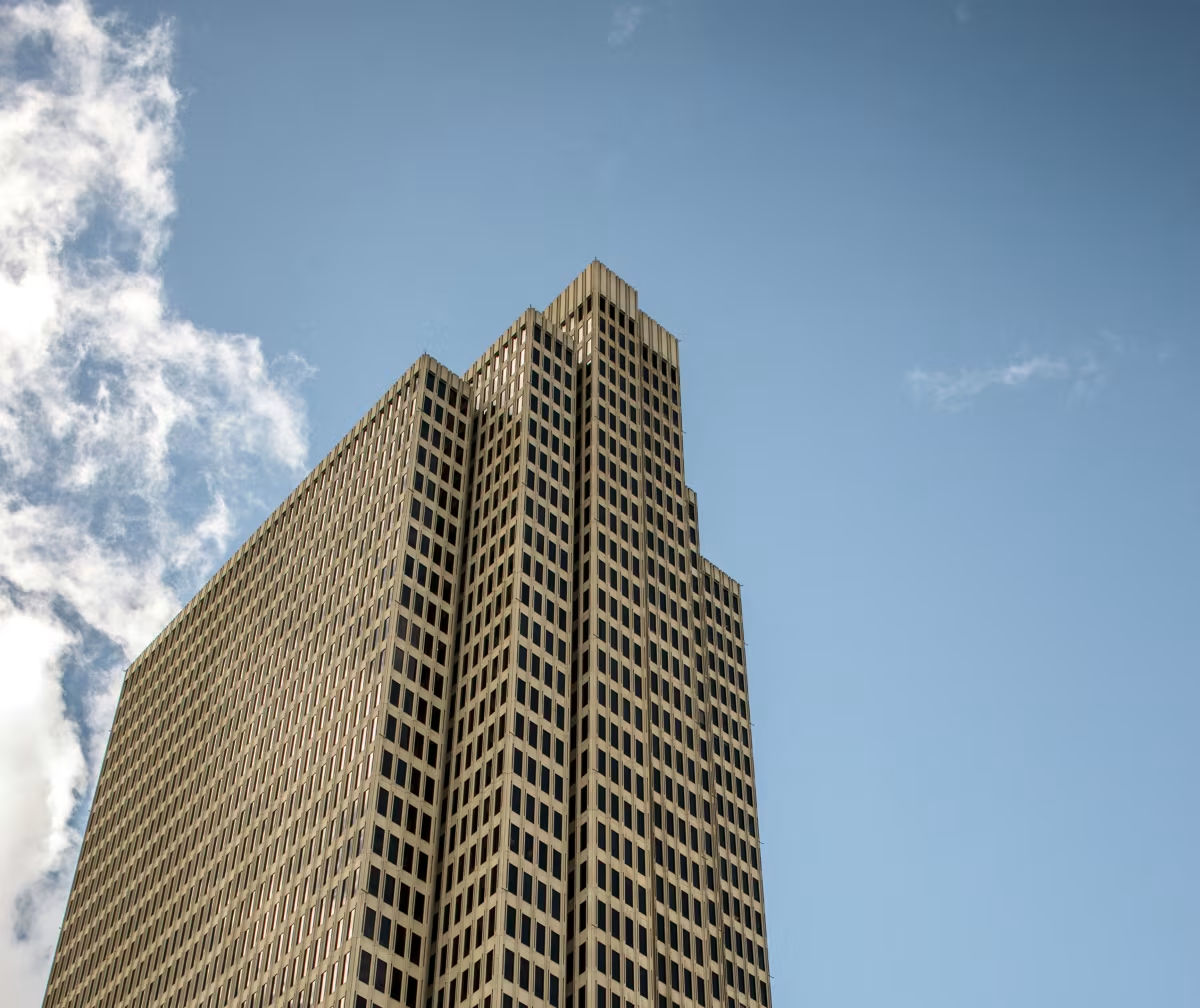Truist Plaza Building vs One Embarcadero Center


Comparing the Truist Plaza Building and the One Embarcadero Center is compelling because they were both designed by John Portman & Associates, yet they stand in different cities (Atlanta, GA and San Francisco, CA), and were completed over two decades apart.
What this will allow us to see, is how the same firm's approach adapted to different places in different periods of time.
Height & Size
The Truist Plaza Building is clearly the larger tower of the two, both in terms of height and number of floors. It rises to 869ft (265m) with 60 floors above ground, while the One Embarcadero Center reaches 568ft (173m) with 45 floors above ground.
Of course, each project may have faced different briefs or regulatory constraints, which we don't really know about and could also explain the outcome.
Architectural Style
The Truist Plaza Building was designed in the Postmodernism style, while the One Embarcadero Center reflects the principles of Brutalism.
Both towers were built when their respective styles were already past their prime. This makes them feel more like late continuations rather than groundbreaking statements, showing how architectural traditions can linger even as tastes shift. The fact that they were built 21 years apart also suggests that architectural fashions often outlast their supposed end dates in practice.Uses
Both the Truist Plaza Building and the One Embarcadero Center were designed to serve as commercial towers, and that has remained their main use since their completion, serving similar roles in the urban fabric.
The One Embarcadero Center also provides 542 parking spaces.
Structure & Facade
Both towers share the same structural solution, a Frame system.
A frame structure uses a grid of columns and beams to carry the building's loads. This frees the walls from structural duties, allowing for flexible floor plans and larger windows.
However, when it comes to the facade, both buildings use different approaches. The Truist Plaza Building uses a Curtain Wall facade, while the One Embarcadero Center uses a Modular facade.
A Curtain Wall facade like the one seen in the Truist Plaza Building uses a lightweight glass curtain wall hung from the structure, while a modular facade like the one seen in the One Embarcadero Center employs prefabricated panels, often mixing solid surfaces with smaller windows.
| Truist Plaza Building | One Embarcadero Center | |
|---|---|---|
| John Portman & Associates | Architect | John Portman & Associates |
| 1989 | Construction Started | 1969 |
| 1992 | Year Completed | 1971 |
| Postmodernism | Architectural Style | Brutalism |
| Commercial | Current Use | Commercial |
| 60 | Floors Above Ground | 45 |
| 265 m | Height (m) | 173 m |
| 275 | Tip Height | 187 |
| 28 | Number of Elevators | 18 |
| Frame | Structure Type | Frame |
| Concrete | Vertical Structure Material | Steel |
| Concrete And Steel | Horizontal Structure Material | Concrete |
| Yes | Facade Structural? | No |
| Granite, Glass | Main Facade Material | Glass, Concrete |
| J.A. Jones Construction Co. | Main Contractor | Dillingham Construction |
| John Portman & Associates | Developer | Trammell Crow Company, And David Rockefeller |
| GA | State | CA |
| Atlanta | City | San Francisco |
| 303 Peachtree Street NE | Address | 355 Clay Street |